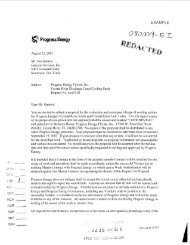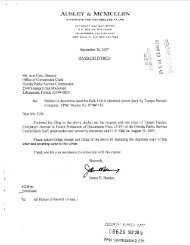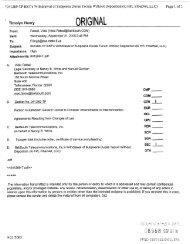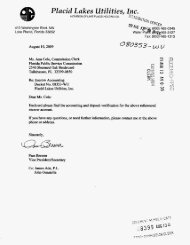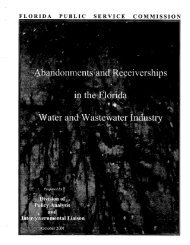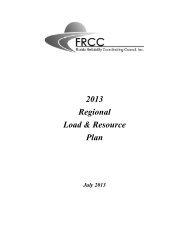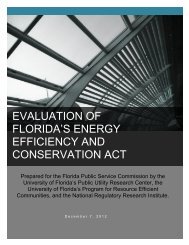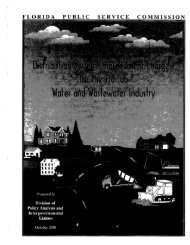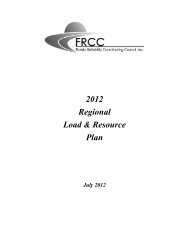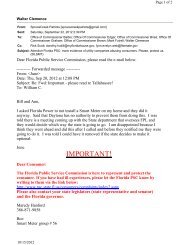Review of 2008 Ten-Year Site Plans - Public Service Commission
Review of 2008 Ten-Year Site Plans - Public Service Commission
Review of 2008 Ten-Year Site Plans - Public Service Commission
Create successful ePaper yourself
Turn your PDF publications into a flip-book with our unique Google optimized e-Paper software.
Natural Gas Price Forecasts and Supply<br />
The utilities provided forecasts <strong>of</strong> natural gas prices in nominal dollars on a delivered basis.<br />
The utilities generally forecast gas prices ranging from $7 to $10 per MMBtu through 2009. Starting<br />
around 2010, the utilities forecast gas prices to decline to $6 to $9 per MMBtu as imports from<br />
Canada and imported Liquefied Natural Gas (LNG) become available. High crude oil prices provide<br />
some support for gas prices due in part to fuel switching. The utilities expect continued volatility in<br />
natural gas prices. Hurricanes and tropical storms in the Gulf <strong>of</strong> Mexico typically cause short-term<br />
spikes in the price <strong>of</strong> natural gas.<br />
As mentioned, the price forecasts are based significantly on the expectation <strong>of</strong> sizable<br />
increases in imports <strong>of</strong> LNG. A delay <strong>of</strong> this expectation will place upward pressure on natural gas<br />
prices. Furthermore, the expectation <strong>of</strong> increases in LNG supply is based on new re-gasification and<br />
terminal facilities coming on line through 2010. These projects are on schedule, and tanker capacity<br />
for importing LNG appears to be adequate. The primary source areas for LNG imports will be Qatar<br />
and Trinidad.<br />
Figure 14 below illustrates forecasts <strong>of</strong> increasing domestically supplied natural gas coupled<br />
with increases in imports <strong>of</strong> LNG. Gas supplies from Canada and Mexico are projected to remain<br />
relatively stable. The reporting utilities are generally forecasting new gas supply from Canada’s<br />
Mackenzie Delta region in 2009 and from LNG imports in 2010 to 2011. Domestic supply increases<br />
may be a result <strong>of</strong> new domestic sources and advances in drilling technology. Longer term, domestic<br />
supply could be enhanced by the development <strong>of</strong> resources in the Alaska North Slope area.<br />
Consumption (Bcf/day)<br />
Figure 14. Natural Gas Consumption in the U.S. by Place <strong>of</strong> Origin<br />
60<br />
50<br />
40<br />
30<br />
20<br />
10<br />
0<br />
51.2<br />
7.9<br />
1.4<br />
51.5<br />
<strong>Review</strong> <strong>of</strong> <strong>2008</strong> <strong>Ten</strong>-<strong>Year</strong> <strong>Site</strong> <strong>Plans</strong> - 30 -<br />
7.7<br />
2.4<br />
56.1<br />
2003 2007 2017<br />
Domestic Gas Production Net Imports / Not LNG Net LNG Imports<br />
Sources: The Petroleum Industry Research Associates Energy Group (PIRA) and internal analysis by FPL.<br />
Demand for natural gas over the planning period will be driven by the requirements <strong>of</strong> gasfired<br />
electric generators. Demand growth in other industry sectors and the residential sector is<br />
expected to be modest.<br />
5.1<br />
9.1




